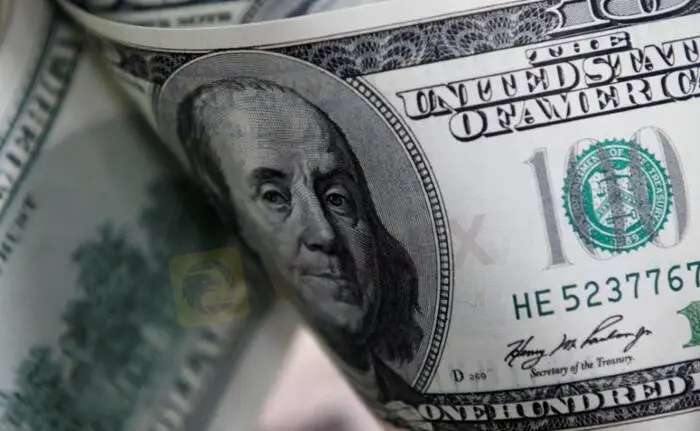简体中文
繁體中文
English
Pусский
日本語
ภาษาไทย
Tiếng Việt
Bahasa Indonesia
Español
हिन्दी
Filippiiniläinen
Français
Deutsch
Português
Türkçe
한국어
العربية
Dollar holds near two-decade high before U.S. inflation data
Abstract:The dollar hovered near a two-decade high against major peers on Wednesday, ahead of a key reading on inflation that should provide clues on how aggressive the Federal Reserve will be in tightening monetary policy.
The dollar hovered near a two-decade high against major peers on Wednesday, ahead of a key reading on inflation that should provide clues on how aggressive the Federal Reserve will be in tightening monetary policy.
The dollar index, which measures the currency versus six rivals, slipped slightly to 103.81, but still not far from the high of 104.49 reached at the start of the week for the first time since December 2002.

The euro rose a touch to $1.05405, but has mostly traded sideways since plumbing a more than five-year low at $1.04695 at the end of last month.
The yen continued to get some respite from a pause in the recent relentless rise in benchmark U.S. Treasury yields, trading little changed at 130.36 per dollar, after dipping to a more than two-decade low of 131.35 on Monday.
Investors will be closely watching the April U.S. consumer price index reading later on Wednesday for any signs inflation may be starting to cool, with expectations calling for a 8.1% annual increase compared with an 8.5% rise recorded in March.
After the Fed raised its benchmark overnight interest rate by 50 basis points last week, the largest hike in 22 years, investors have been attempting to assess how aggressive the central bank will be.
Markets are priced for another hike of at least 50 basis points at the central bank‘s June meeting, according to CME’s FedWatch Tool.
“We remain of the view that the broad U.S. dollar rise will continue as the Fed executes its super-tightening,'” strategists at Westpac wrote in a research report.
“Look for ongoing demand for (the dollar index) on dips, with 104 already being probed and still potential for a run towards 107 multi-week.”
The greenback has climbed nearly 9% this year amid an increasingly hawkish Fed, as inflation burned hotter than policymakers had expected.
Commonwealth Bank of Australia also sees the risk tilted to further gains from here.
“The USDs reaction to the CPI will be asymmetrical in our view,” CBA currency strategist Joseph Capurso wrote in a client note.
“A positive surprise will encourage markets to increase pricing for a 75 (basis point) increase in the Funds rate later in the year and support the USD, while a negative surprise will keep pricing for 50bp increases in June and July intact and leave the USD steady.”
The euro “remains heavy” above $1.05, he wrote, and a strong CPI print could push the Australian dollar below $0.69.
The Aussie climbed 0.25% to $0.69595 on Wednesday, after touching a 22-month trough of $0.6911 earlier in the week.
New Zealand‘s kiwi dollar gained 0.22% to $0.63075, but remained not far from the previous session’s nearly two-year low of $0.6277.
CBA sees the potential for a further 5 U.S. cent drop in both Antipodean currencies if strict COVID-19 lockdowns continue for several more months in key trade partner China, although fundamentals point to “large gains by year-end” for Aussie and kiwi after the lockdowns end.
Meanwhile, sterling struggled near a 22-month low at $1.2262 from the start of the week, last trading 0.1% higher at $1.2334.
Bitcoin nursed its wounds after dropping to the cusp of $30,000 this week for the first time since July of last year, last changing hands about 2% higher at $31,600.
(Editing by Jacqueline Wong)
Disclaimer:
The views in this article only represent the author's personal views, and do not constitute investment advice on this platform. This platform does not guarantee the accuracy, completeness and timeliness of the information in the article, and will not be liable for any loss caused by the use of or reliance on the information in the article.
WikiFX Broker
Latest News
How Do You Make Money in the Forex Market in March 2025
Europe’s High-Stakes Gamble: Can It Bridge the U.S.-Ukraine Divide?
Crypto Trading: New Trend among Indian Youth
Botbro Creator, Lavish Chaudhary Unveils New Project
Is TUOTENDA a cryptocurrency scam primarily targeting men over the age of 50?
Canada to Enforce Retaliatory Tariffs if U.S. Duties Persist
Unbelievable! Is the Yen Really Gaining Strength?
Malaysia’s EPF Declares Highest Dividend Since 2017 Amid Market Resilience
First UK Criminal Conviction for Unregistered Crypto ATMs Involves Over £2.5 Million
Consob Exercises MICAR Authority for the First Time, Shutting Down Unregistered Crypto Website
Currency Calculator







